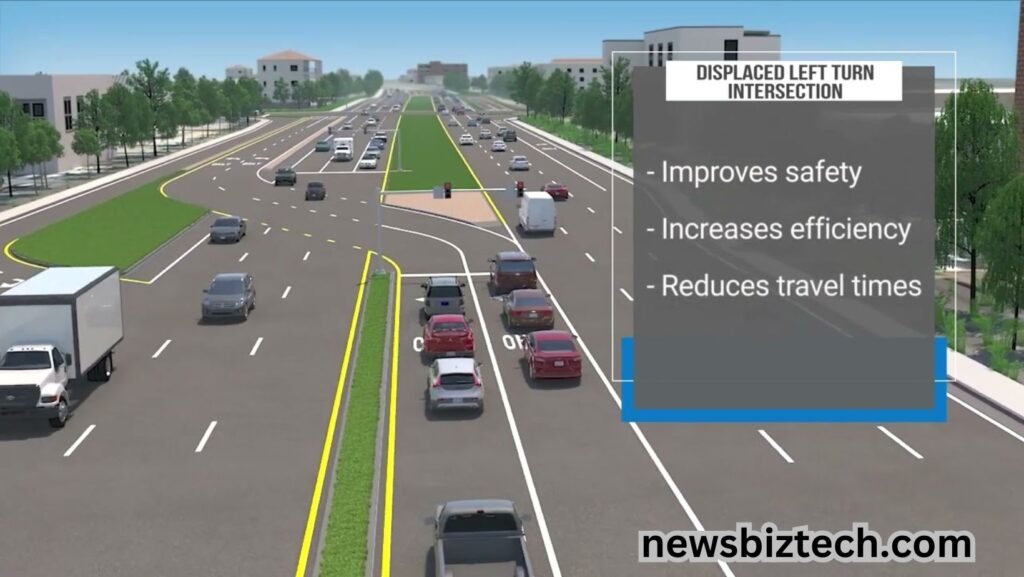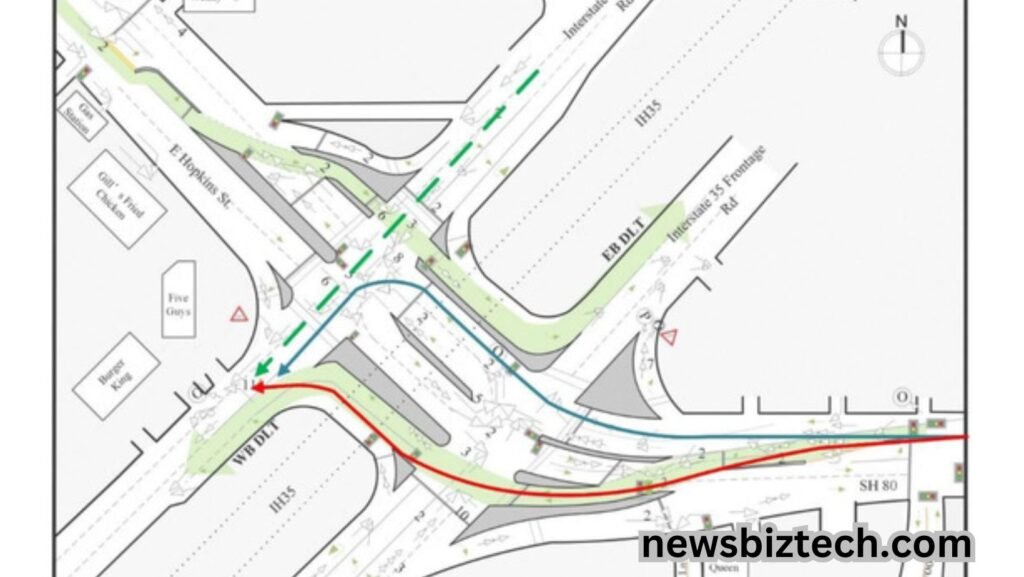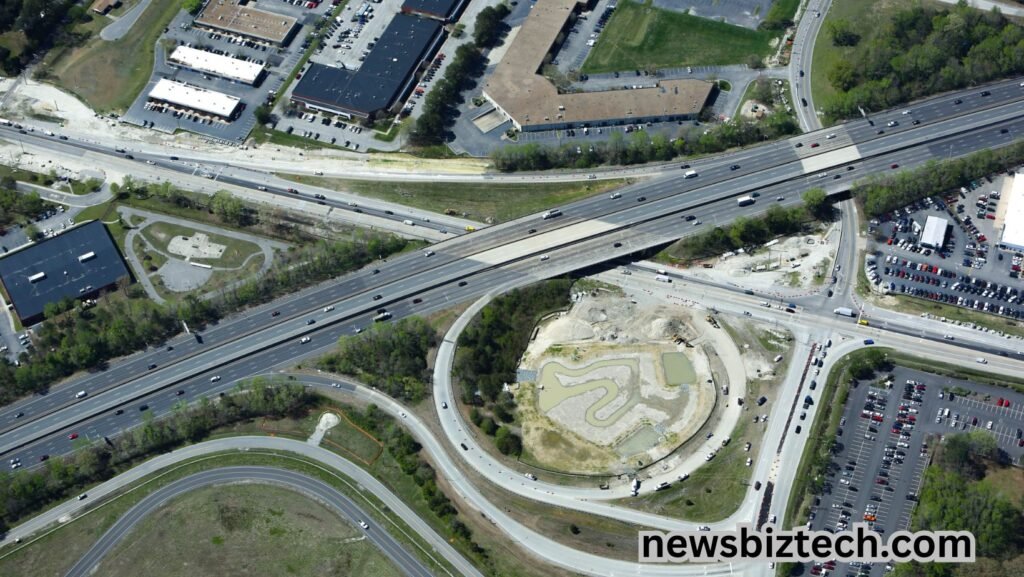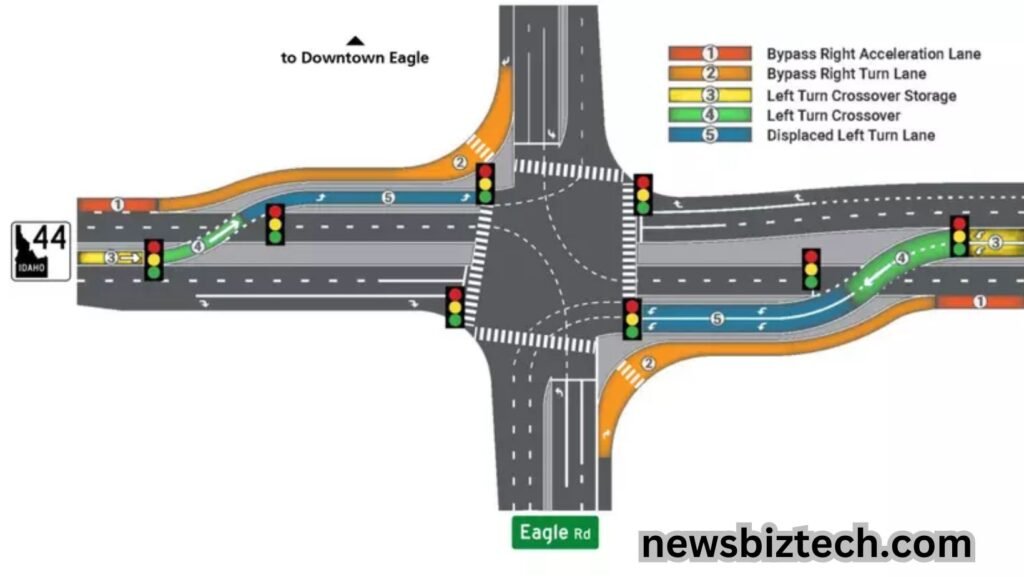The displaced left turn intersection 2014 hummer news has been considered as a very innovative solution of the technology in traffic engineering aimed at improving road safety, alleviating congestion and lowering accident rates. Actually, it was introduced as a solution to problems experienced in traditional left-turn intersections such as very long delays and very high accident rates. Since then, it has been applied in many parts of the world. Its application, however, has not been without difficulties. A very public accident involving a 2014 Hummer at a DLT intersection does raise some significant questions as to the safety and efficacy of this design. This page offers a comprehensive examination of the DLT intersection, looking at the advantages and disadvantages of this design-and then at the specifics of what happened in the 2014 Hummer accident.
Key Takeaways
- Displaced Left Turn (DLT) intersections are innovative traffic solutions designed to improve safety and reduce delays.
- The 2014 Hummer news highlighted an incident involving this intersection type, sparking debates about its design and implementation.
- DLT intersections can enhance traffic flow by up to 40% compared to traditional designs.
- Key features include rerouting left-turning vehicles before the main intersection, reducing conflict points.
- This article covers the design, benefits, challenges, and incident analysis related to displaced left turns and their impact on traffic systems.
What is a Displaced Left Turn Intersection?
A DLT, also known as a CFI at other places, is an intersection design wherein left turn traffic is permitted over oncoming traffic before it reaches the main intersection. This routing of left turn lanes serves to decrease the number of conflict points that any intersection has and thus improve its overall efficiency and safety.

Important Features of DLT Intersections
- Rerouted Left Turns: Traffic to turn left is directe across against the flow at a midblock crossover.
- Reduce Conflict Points: The DLT design has the major intersection skip direct left turns, which definitely reduces the number of conflict points.
- Enhanced Traffic Efficiency: DLTs can enhance overall efficiency by segregating left turning traffic from main traffic flow.
Table 1: Traditional vs. Displaced Left Turn Intersections
| Feature | Traditional Intersection | Displaced Left Turn Intersection |
|---|---|---|
| Conflict Points | 32 | 14 |
| Average Delay (Seconds/Veh) | 80-120 | 45-70 |
| Left Turn Wait Time (Seconds) | 30-90 | 15-45 |
| Traffic Flow Improvement | Baseline | Up to 40% |
Statistical Impact of DLTs
For example, the FHWA reports that DLT intersections can cut delays by as much as 40% compared to the conventional junction. They also reportedly reduce left-turn accidents by 20-30%, which makes them a safer option for the high volumes.
Also Learn More: displaced left turn intersection 2014 hummer news
A Case Study: The 2014 Hummer Incident
A recent case of a Hummer that encountered an accident at a DLT junction hit the headlines of news in 2014. In an attempt to turn left, it ran into other vehicles, thereby causing massive public outcry concerning the visibility and sign-related problems when using DLT junctions.
This attracted public outcry about the safety and usability of such junctions, especially when using large vehicles, like Hummers.
Analysis of the Incident
Several factors were say to have led to the accident, according to the investigation report:
- Driver Mistakeness: The reported driver of the Hummer at the crossover point that thus made the improper turn.
- Invisibility: The Hummer was very large that blocked the view of the oncoming traffic, which amplified the situation.
- Invisibility of Signs: Several observers stated that this intersection lacked visible signs, which were mostly missing at the DLT, and this caused confusion.
Impact of Incident
Following the accident, local traffic officials evaluated the design of the DLT intersection and improved to accommodate clearer signage and better markings on the roads. The case underlines the education of drivers and proper signaling that will ensure the success of innovations in traffic design such as the DLT.
Also Learn More: displaced left turn intersection 2014 hummer news
Benefits of Displaced Left Turn Intersections
Despite the fact that the displaced left turn intersection 2014 hummer news crash threw tremendous concern over DLT intersections, several benefits can be draw from DLT intersections:

Increased Safety
DLTs eliminate the possibilities of potential collision points by diverting left turns away from the main intersection. The American Association of State Highway and Transportation Officials conducted a study, and it was conclude that intersections with DLT designs experience 25% fewer accidents relate to left-turn crashes compare to traditional design layouts.
Improved Traffic Flow
One of the positive results of the intersection through a DLT is that its management of huge volumes of traffics in a more efficient way. In this respect, their left-turning vehicles can be separate from the main flow of traffic earlier for reducing the general levels of congestion. This is highly observable especially during peak hours when other intersections wholly find it hard to cope with heavy left-turning traffics.
Cost-Effective Solution
Although the cost of constructing DLT intersections is high compare to the traditional intersection construction, the benefit of saving from reduce congestion, fewer accidents, and less expenditure on maintenance is high. It is acknowledge that DLTs reduce travel time delays up to 20%, which is a good way of saving money significantly, as a suggestion provid by the Transportation Research Board.
Table 2: Cost-Benefit Comparison Between DLT and Traditional Intersections
| Aspect | Traditional Intersection | Displaced Left Turn Intersection |
|---|---|---|
| Construction Cost | $1.5 – $3 million | $2 – $4 million |
| Annual Maintenance Cost | $50,000 – $75,000 | $30,000 – $50,000 |
| Average Accident Reduction (%) | Baseline | 20-30% |
| Long-Term Economic Savings | Moderate | High |
Advantages and Disadvantages of DLT Intersections
Although DLTs have been effective in most applications, they are not without the attendant problems:

Driver Confusion
A primary point of contention against DLT intersections is that of potential driver confusion, especially for those less familiar with the design. This may result in improper lane changes and elevated accident risks, as was the case with the 2014 Hummer incidence.
Space Requirements
However, DLT intersections require more space than traditional intersections, as they require an additional crossover lane on each side. This can prove to be a limiting factor in many dense urban areas where land is very scarce.
High Upfront Costs
The construction of a displaced left turn intersection 2014 hummer news is likely to be expensive at the outset, particularly if land acquisition or major reconfiguration of a road is require. These upfront costs are usually recovere by savings accruing from substantially lower congestion and accident rates over time.
FAQs

What is a Displace Left Turn Intersection?
A DLT is a road design that diverts left-turning traffic across opposing traffic before it reaches the main intersection to enhance safety and efficiency.
How do DLTs enhance traffic flow?
DLTs reduce delay and overall traffic congestion by removing left turns at the main intersection.
What are the benefits of DLT intersections?
DLTs have enhanced safety, minimized congestion, and brought about economic savings from fewer accidents, and a good flow of traffic.
Challenges facing DLTs intersections?
Driver-Operated Intersection Confusion Increased Space Requirements Higher Implementation Cost
How did the 2014 Hummer incident influence public perception of DLTs?
The accident was to go a long way in shining the light on potential problems of visibility of drivers and proper signaling of the turning vehicle at DLT intersections, however, improvements in signage along with proper education of the drivers in this regard.
Conclusion
The displaced left turn intersection 2014 hummer news is an innovation in traffic engineering that represents a safer as well as more efficient alternative to conventional designs of the intersection. While an incident like the 2014 Hummer crash would draw attention to these weaknesses, the overall gains DLTs give to traffic management include reduced congestion and safety. It might just be that their implementation would come to define more traffic intersections in cities as traffic loads escalate.

